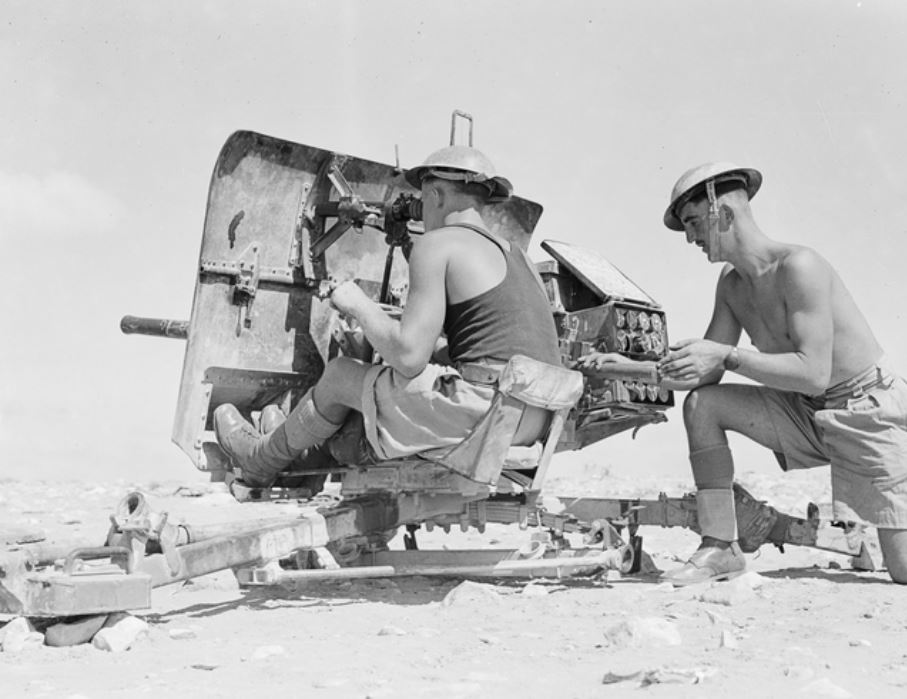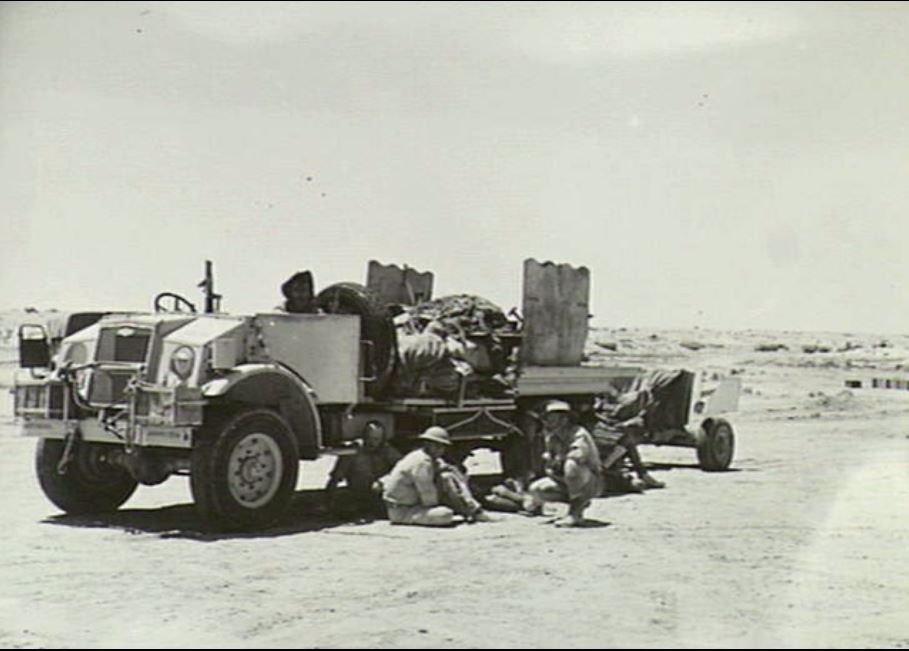2/3rd Australian Anti Tank Regiment
From Our Contribution
 8 Sep 1941. Gunners from the Australian 2/3rd Anti-Tank Regiment at Tobruk - AWM photo 020760 | |
 12 Aug 1942. 6-pounder gun and vehicle, 2/3rd Anti-Tank Regiment - AWM photo 024823 | |
Contents
[hide]Brief History
The 3rd Anti-Tank Regiment was formed at Warwick Farm in Sydney in July 1940 as part of the 8th Infantry Division before being renamed the 2/3rd Anti-Tank Regiment, comprising the 2/9th A/tk Battery, 2/10th A/tk Battery, 2/11th A/tk Battery and the 2/12th A/tk Battery. In September they moved to Ingleburn, and in October they were reallocated to the 9th Australian Infantry Division. The following month they left for the Middle East, arriving at Julis in Palestine in December to undertake training.
In March 1941 part of the unit moved to Amiriya in Egypt before moving to join the 9th Infantry Division forward of Tobruk before moving to Mechili where they were overrun in April by the Germans, losing most of their equipment, and most their HQ unit and 2/11th Battery before making good their escape to Tobruk. Here the rest of the unit other than the 2/12th A/tk Battery rejoined them in time for the siege where they played an active part in its defence before being relieved in September.
In September 1941 the unit reassembled at Hill 95 in Palestine where the following month they absorbed the 2/24th A/tk Battery before they moved to Qastina. In December they absorbed the 20th A/tk Battery and in January 1942 they moved to Bsarma in Syria to develop the defences of the Tripoli Fortress Area before being rushed back to Egypt following the German breakthrough. Individual batteries were attached to infantry brigades and for the next five months participated in the defensive battles from July to September, followed by the British breakout campaign in October and November. In December they returned to El Bureig in Palestine and left for Australia in January 1943.
After arriving in Sydney in February, the Regiment moved to Narellan where they took leave and then concentrated at Kairi in Queensland. During this time the unit was renamed 2/3rd Australian Tank Attack Regiment. The Jungle Division establishment required only a single battery per division. The 2/9th battery moved to Townsville in August but were disbanded in April 1944, and the 2/12th Battery moved to Wondecla in September to train before returning a year later. The 2/10th Battery was attached to the 7th Infantry Division and moved to Port Moresby in July to work of defences before returning to Ravenshoe (Qld) in April 1944. Meanwhile the 2/11th Battery had moved to Milne Bay, taking on a beach head defence role when the 9th Division landed at Lae. During the landing at Finschhafen their guns were used to defend the coastline before they returned to Ravenshoe in March 1944. Regimental HQ had moved around in north Queensland, and the unit was not back together until September 1944.
In october another establishment change saw the 2/3rd A/tk Regiment return to join the 9th Division at Ravenshoe. In preparing for the recapture of Borneo it was felt that there would be little need for the guns, and thus the unit trained on 4.2 inch mortars, and as infantry. In March 1945 they had moved to Cairns and from there to the staging area on Morotai by April where they worked on the docks.
The regiment moved to Labuan in late June, and in July, acting as infantry, they relieved the 2/28th Infantry battalion at Weston. In July the 2/10th Tank Attack Battery formed Gusforce to patrol t Sipitang area with the rest of the regiment acting as infantry undertaking mopping up activity until the end of the war. The 2/3rd Australian Tank Attack Regiment formed Natuna Force to supervise the surrender on the Natuna archipelago of 272 islands of the north west coast of Borneo, an area now in part disputed by China's South Sea Island claim.
Battle Honours
Unit Personnel
- Douglas Edward Cleave Steer 7 Sep 1941 - 12 Apr 1943
- Ashley Claude George Moseley Cordy 16 Oct 1941 - 8 May 1944
- William George Law 28 Nov 1944 - 30 Aug 1945
Notes
Content has come from The Unit Guide - Volume 3 - The Australian Army 1939-1945, pages 3.093 and 3.094 - Graham R McKenzie-Smith - Big Sky Publishing - 2018